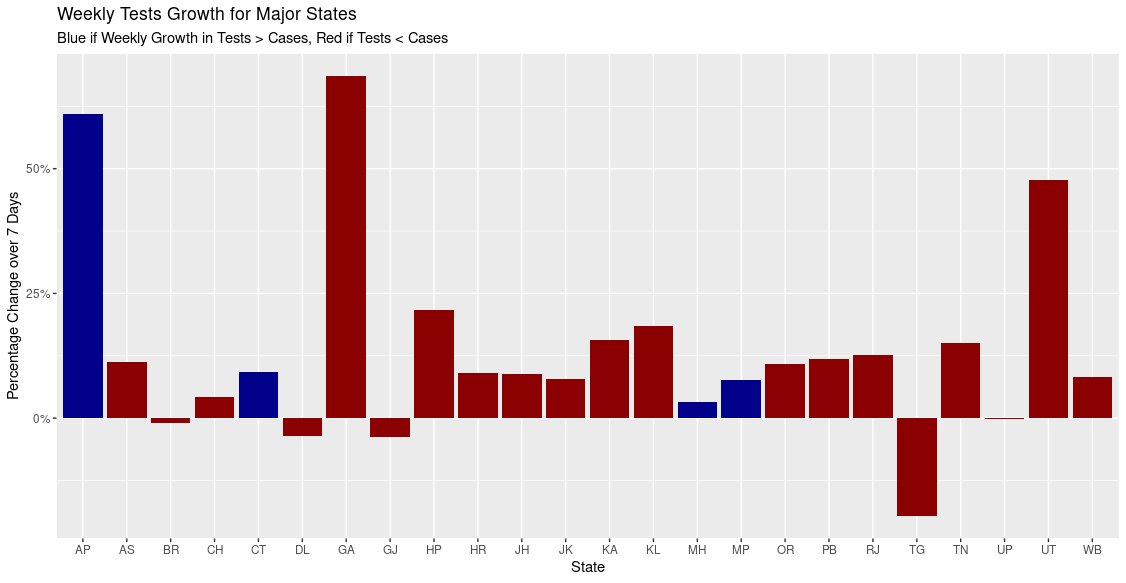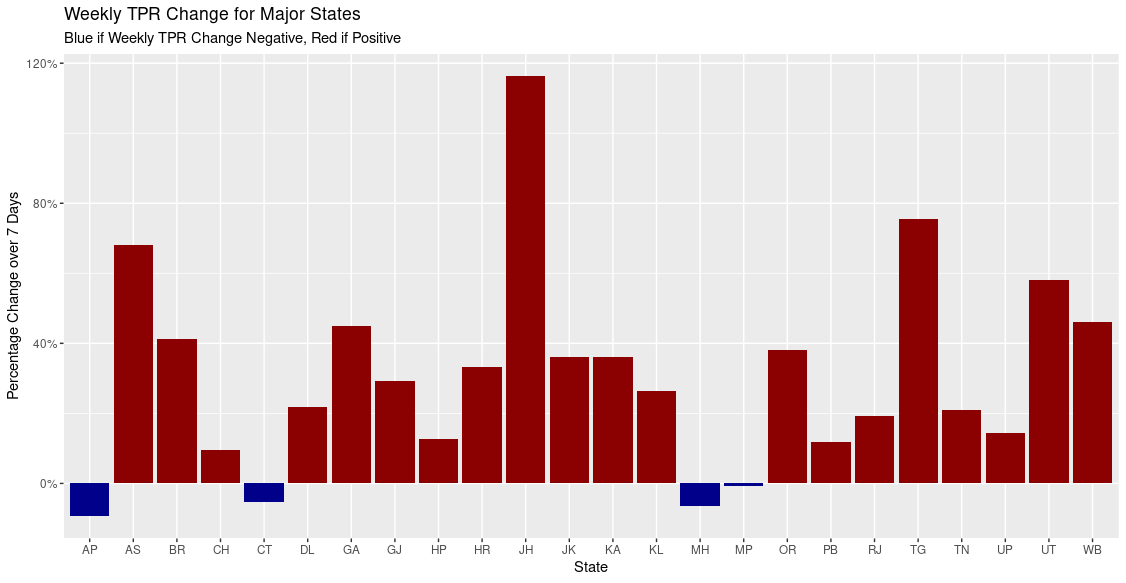
#COVID19India
Quite frankly, I don't (and couldn't know). I've mucked around from simple to ensemble #ML models over the last year, only to realize that something this complex cannot be modelled or predicted.
However, you can pick up what's happening, currently, based...
+
Quite frankly, I don't (and couldn't know). I've mucked around from simple to ensemble #ML models over the last year, only to realize that something this complex cannot be modelled or predicted.
However, you can pick up what's happening, currently, based...
+
https://twitter.com/krishkaran2009/status/1388340476281954305
... off the standard epidemiological metrics - changes in trends, TPR, testing rates, recoveries etc. And what that means in terms of the near and medium-term horizons.
The most sensible benchmark would be TPR declining or levelling off against testing rates that are rising...
+
The most sensible benchmark would be TPR declining or levelling off against testing rates that are rising...
+
... against/ahead of case growth rates. If the data is passably reliable, it's a good indicator that a peak is to be expected, followed by a decline.
This would also show in R[t] hitting 1.0 on a decline and continuing to go under. If testing is doubtful, TPR is rising ...
+
This would also show in R[t] hitting 1.0 on a decline and continuing to go under. If testing is doubtful, TPR is rising ...
+
... cumulative CFR is declining (temporarily) from an asymptotic trend, you don't know what's going on and certainly should not expect a real peak in infection in the region of interest.
Wish I could be more optimistic about this, but I don't see a quick turnaround ...
+
Wish I could be more optimistic about this, but I don't see a quick turnaround ...
+
... regardless of what the daily case numbers suggest.
• • •
Missing some Tweet in this thread? You can try to
force a refresh























